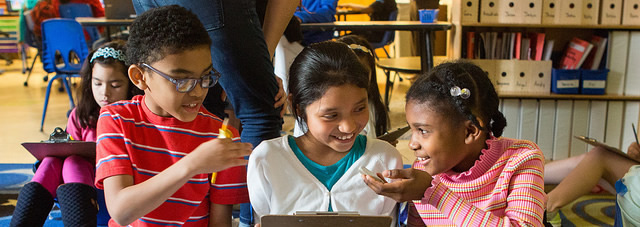Applying a Cultural Lens
Applying a cultural lens to policy and practice may be described by different terminology: cultural relevance, culturally responsive practice or pedagogy, cultural competence, cultural proficiency, cultural responsivity, or multicultural education. The four step process for addressing disproportionality necessitates considering how to apply a “cultural lens” to all steps of the work.
Looking through a cultural lens means stepping back and considering the cultural implications of policy and practice for all members of our community. Our perspectives, values, and viewpoints are formed by the context in which we grew up as well as the one in which we live. Often miscommunication or ineffective actions can result when culture is not taken into consideration as we research, plan, and implement policy and practice. For example, if a group of students has been consistently taught at home and in their community that working together is the most important value then introducing incentives that only reward individual achievement may not be an effective approach.
Culturally responsive practice, or becoming adept at applying a cultural lens, is a developmental process that begins with having an awareness of one’s own beliefs, gaining knowledge of others’ cultures, and understanding how different cultural values intersect. As we move along the spectrum of cultural competence and gain proficiency, we deepen our understanding of disparities and enhance our abilities to create equity. A culturally competent educational system is marked by a set of behaviors, attitudes, and policies that come together to create equal access to opportunities for all students through active attention to and valuing of their individual differences.
Culturally Responsive Practices involve:
- Understanding one’s own identity and values.
- Knowing how one’s own background influences perceptions.
- Gaining knowledge about the cultural background of others.
- Developing the skill to enhance practices which result in improved services and an equitable education for all students.
At each activity of the four step process for addressing disproportionality, local educational agencies (LEAs) can continuously pose the following questions for consideration. They will help to guide the ongoing development of culturally responsive practice.
Questions for consideration:
- Do our methods of instruction and the content of our curriculum draw from the experience of our students and the communities they come from?
- Do our teaching styles relate to the multiplicity of ways in which our students learn?
- Are we using data in the most effective ways possible to understand our students, our school, our challenges, and our successes?
- Are we promoting a just and equitable system that consistently increases the access to opportunities for all our students?
- Are we engaged in professional development that is ongoing and connected to practice?



